I hope you enjoyed your stay in Revolutionary France of 1795 via Elizabeth Ellen Carter’s Blog. You are now in Regency England!

Thanks for stopping by and welcome to 1814: a time of decadent balls, glorious gowns, sharp dressed men, and, unfortunately, war. Our time machine will be visiting 1814 twice, so for this stop, we are focusing on the first half of 1814.
1814 is the year my novella, The Umbrella Chronicles: George & Dorothea’s Story, in the Never Too Late anthology takes place.
The setting is England during a period of time known as The Regency. This is because King George III had become unfit to rule and so his son, George, ruled by proxy as the Prince Regent beginning in 1811 until his father’s death in 1820, at which time the Prince Regent became King George IV.
Napoleonic Wars: The Sixth Coalition versus the French
One couldn’t talk about the year of 1814 without mentioning the Napoleonic Wars. 1814 saw the Sixth Coalition of allied forces (Austria, Russia, Prussia, UK, Portugal, Sweden, Spain, and several German states) battling the French under emperor Napoleon Bonaparte. Numerous battles took place over the course of the year, concluding with a very short-lived time of peace (for despite exile to Elba in April, the infamous Battle of Waterloo (1815) has yet to take place).
Here are some of the major battles and events surrounding the Napoleonic Wars that occurred in the first half of 1814:
January 14 The Treaty of Kiel is signed ending hostilities between Denmark-Norway (French ally) and the UK and Sweden (part of the 6th Coalition).
January 29 The French defeat Russia and Prussia in the Battle of Brienne.
February 1 The French defeat Russia in the Battle of Champaubert.
February 17 The French defeat Russia and Austria in the Battle of Mormant.
February 18 The French defeat the Austrians and Württembergers in the Battle of Montereau.
March 1 The Sixth Coalition sign the Treaty of Chaumont.
March 7 The French defeat Russia and Prussia in the Battle of Craonne.
March 21 The French, severely outnumbered, flee from the Battle of Arcis-sur-Aube.
March 30 Sixth Coalition forces march into Paris after defeating Napoleon.
March 31 Forces allied against Napoleon capture Paris.
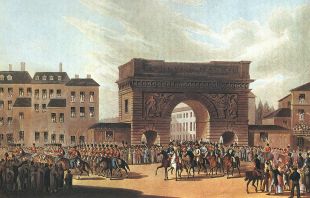
April 11 Napoleon abdicates unconditionally; he is exiled to the island of Elba, and the French Bourbon monarchy and King Louis XVIII is restored. The Treaty of Fontainebleau is signed, allowing the Congress of Vienna to redraw the map of Europe.
April 26 King Louis XVIII lands at Calais from England.
May 4 Bourbon reign restored in France.
May 30 The Treaty of Paris (1814) is signed returning French borders to their 792 extent.
War of 1812
The War of 1812 is a conflict between the US and the UK and their respective allies. The War was fought from 1812 – 1815 and was declared by the US against the UK as a response to the British blockade of trade with France (due to the Napoleonic Wars) and impressment of American sailors into the British Royal Navy to fight against the French.
March 27 Battle of Horseshoe Bend: General Andrew Jackson defeats the Red Sticks, part of the Creek Indian tribe near Dadeville, Alabama.
May 5 British attack Ft Ontario, Oswego, NY
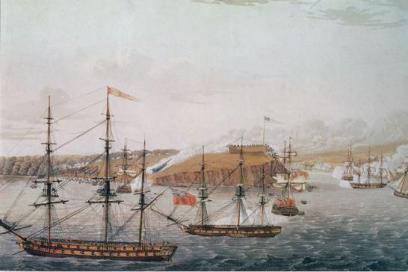
Other European Politics

February 11 Norway proclaims its Independence.
May 4 King Ferdinand VII of Spain signs the Decree of the 4th of May, returning Spain to absolutism.
May 17 Denmark cedes Norway to Sweden (National Day).
May 17 Norwegian constitution passed.
May 17 Occupation of Monaco changes from French to Austrian.
The Arts
February 1 Lord Byron’s “The Corsair” is published and sells 10,000 copies the first day.
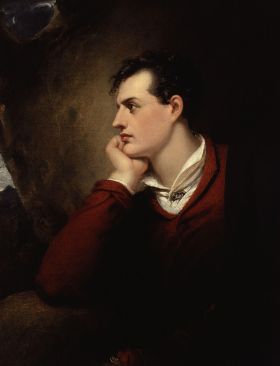
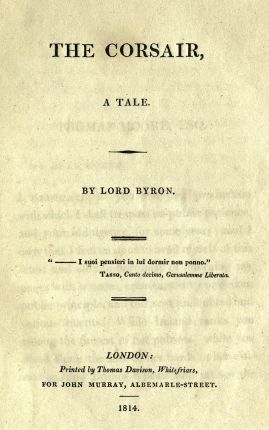
Febuary 27 Ludwig von Beethoven’s 8th Symphony in F premieres.
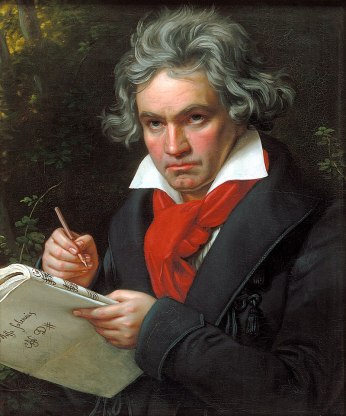
The Environment

February 1 Tragedy strikes when Volcano Mayon in the Philippines erupts killing 1,200
Notable Deaths

March 26 Joseph-Ignace Guillotin, French physician and freemason who proposed and became the namesake of the guillotine, dies of natural causes at 75
May 29 Joséphine de Beauharnais, first wife of Napoleon I and first Empress of France (1804-14), dies of pneumonia aged 50
Fashion & Style

We can’t talk about Regency without noting the fashions and decorating styles of the day; it’s one of the many reasons romance readers love romances that take place in the Regency time period.
Classicism was the favored style in Regency England, particularly Roman and Greek motifs which were blended with French and Egyptian elements giving Regency Classicism a visually rich elegance. Noted in this style are heavy floral motifs, gilded designs, scrolling leaves, and classical friezes. You can see more at http://www.vam.ac.uk/content/articles/s/style-guide-regency-classicism/.
Women’s Fashion

Women’s dresses of the period, particularly among the haute ton (society), were noted for their high, empire waists. Women would wear their gowns over a shift or chemise, which would be made of a sturdier material so that it could be washed frequently. Whereas the gowns themselves would be made of much finer material and would not be washed with each use unless particularly soiled.
Society women would change their clothes often during the day, depending on what activities were planned. They usually had specific types of dress for different activities. For example, a society lady might have several:
- morning gowns
- visiting gowns
- walking gowns
- promenade dresses
- carriage dresses
- riding habits
- dinner dresses/gowns
- ball gowns
No wonder they employed a lady’s maid to sort their daily attire! Not to mention that fashions were constructed such that one couldn’t put on all the requisite stays, petticoats, dresses without assistance.
There is so much I could say about the fashions of the day, but Author Kristen Koster has an excellent Primer on Regency Women’s Fashion, here that covers all the major terms and forms of dress for women in Regency, England.
Men’s Fashion
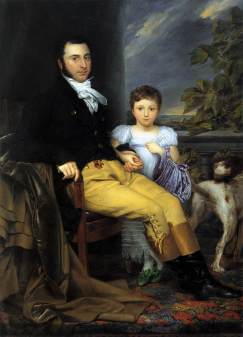 Be still my beating heart. Society Men were well dressed and also put forth a lot of effort toward their toilette. In fact, society men usually employed a valet to care for and dress them appropriately.
Be still my beating heart. Society Men were well dressed and also put forth a lot of effort toward their toilette. In fact, society men usually employed a valet to care for and dress them appropriately.
Regency men’s dress is most noted for it’s waistcoats, cravats, and Hessian boots.
In the picture to the left, you will note the hallmark Regency characteristics of a cravat, jacket, knee breeches, boots, and even a caped great coat draped over the back of the chair.
For more details on men’s regency fashion, author Kristen Koster has an excellent Primer on Regency Men’s Fashion, here.
Beau Brummell

We cannot talk about fashion and style in Regency England without mentioning the infamous society figure and self-proclaimed dandy: Beau Brummell.
George Bryan “Beau” Brummell was born in London in 1778. The son of a politician, he became an iconic figure in Regency England as a an arbiter of men’s fashion and well-known friend of the Prince Regent. If Brummell did it, every dandy in London copied it.
Brummell was a witty, educated man having attended Eton College and then Oxford before joining the military in 1784 as part of the Tenth Royal Hussars, which was later renamed to the 10th (Prince of Wales’s Own) Regiment of (Light) Dragoons (Hussars) in honor of King George IV.
After leaving the military, Brummell took a house in Mayfair, where he became a major influencer of style and personal hygiene. He was known to be fastidious, cleaning his teeth, bathing and shaving on a daily basis. It was once rumored that he spent 5 hours a day on his toilette, and that the Prince Regent, himself, visited Brummell’s rooms to witness this man’s morning lengthy ablutions.
Unfortunately, being an icon of fashion does not pay well, quite the opposite in fact, and in 1816, Brummell fled London for France to avoid debtors prison where he lived the remainder of his life in exile.
Giveaway!
Comment on all eight blogs in the tour and be entered to win a $25 gift voucher from Amazon and a print copy of Never Too Late!
You can get to all eight blogs via the time machine page on our Bluestocking Belle’s website once all tour stops are published.
The Umbrella Chronicles
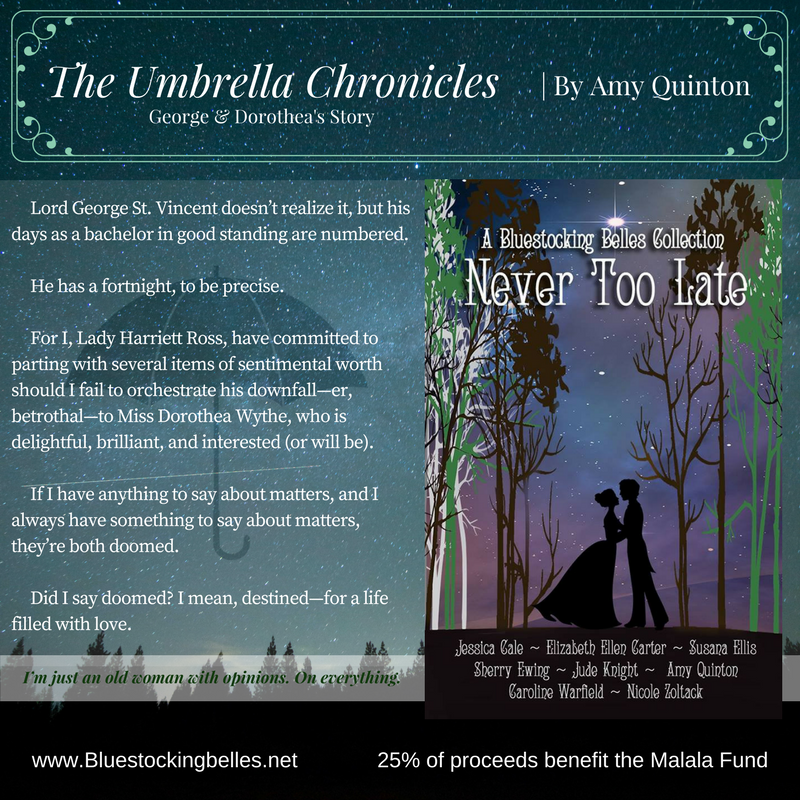
Farewell from 1814
Thank you for stopping by. I hope you found your stay informative and glamorous. For your next stop, you’ll be traveling to 1916 Picardy, France via Caroline Warfield’s blog. Or you can return to the time machine page on our Bluestocking Belle’s website and pick a year as they are posted over the next few weeks.
I wish you safe travels. Good luck. Try not to land in the midst of the Battle of the Somme!
Love,


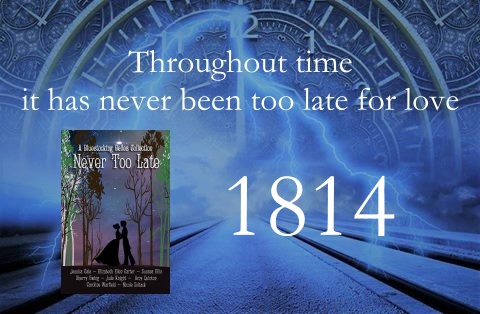
Beethoven! That alone would convince me to visit 1814. I love this.
LikeLiked by 1 person
Thanks. I wish I could visit and be the proverbial fly on the wall.
LikeLike
What a busy year it was, Amy!
LikeLiked by 1 person
It was, indeed! There was so much more I could have included…
LikeLike
I love history. Thank you for a great lesson.
LikeLiked by 1 person
You’re welcome. Thanks for stopping by!
LikeLike
I love history. Thank you for the great lesson!
LikeLiked by 2 people
You’re welcome! Come again.
LikeLike
Very interesting, just want to say, I loved all the stories in this book.
LikeLiked by 1 person
I’m so glad you loved them!
LikeLike
I did.
LikeLike
Thanks for the information pretty neat!
LikeLiked by 1 person
You’re welcome!
LikeLike
Thank you for all this – the empire dresses, Beethoven, so many interesting events. And poor George III.
LikeLiked by 1 person
You’re welcome! Thanks for stopping by… 🙂
LikeLike
Fascinating!
LikeLiked by 1 person
I have often wished we could have had more time in teaching history to include many of the odd events that did affect the outcome of history. I have enjoyed reading the excerpts greatly.
LikeLiked by 1 person
Me, too. I’m glad you’ve enjoyed our time travel posts! Thanks for stopping by. 🙂
LikeLike
Thank you for the lovely history lesson. Wow, getting dressed back then was hard work, good thing a valet or lady’s maid was available to help.
LikeLiked by 1 person
You’re welcome. It is fascinating. There are days I consider not getting out of my pajamas a success, so… lol 🙂 Thanks for stopping by!
LikeLike
The never-ending line of fashion was amazing! There was a “gown” for every aspect of society. Keeping abreast of the “fashion news of the day” kept one completely immersed and “at the top of their game” to “one-up” the other women.
LikeLiked by 1 person
Very interesting. Love the fashions but glad we don’t wear that much.
LikeLiked by 1 person
Me, too!
LikeLike
I love learning about fashion in that time period. Also I love books centered around the Napoleonic wars! Soooo fascinating!
LikeLiked by 1 person
I loved this history visit because this is one of my favorite periods. So much happening in all aspects of life. I loved the Umbrella Chronicals and the appearance of the dreaded umbrella! That was such a unique take on an omen and lived that it “found” George who I adored. I love those meddlesome matriarchs!! Thank you so much!!
LikeLiked by 1 person
I’m so glad you loved the story! I’ll be writing more stories for the Umbrella Chronicles. 🙂 Thanks for stopping by…
LikeLike
I love the gowns in this era. I wonder if they changed their dresses often during the day due to the heat as well as social events
LikeLiked by 1 person
I don’t think it was the heat so much as flaunting their wealth. 🙂
LikeLike
Thanks for stopping by!
LikeLike
So many cool things happening in 1814
LikeLiked by 1 person
Wonderful information. Thanks for the links to the primers for the fashions! A lot happened in 1814, more than I realized!
LikeLiked by 1 person
You’re welcome! Thanks for stopping by! 🙂
LikeLike
What an interesting time period! Thank you for sharing with us
LikeLiked by 1 person
You’re welcome! Thanks for stopping by… 🙂
LikeLike
Reblogged this on passthebookplease.
LikeLiked by 1 person
Wonderful post… Love all the History!
Happy Holidays~
Kelly Braun
LikeLiked by 1 person
Thank you! And thanks for stopping by… 🙂
LikeLike
I wonder why Brummel didn’t just marry for money?
LikeLiked by 1 person
He had a fortune and blew it all gambling and spending extravagantly. He also tended to be rude, eventually losing favor with Prinny. Ultimately his reputation was in tatters, and he fled his creditors and the society who turned on him. I suspect he couldn’t marry for money by then as he would have been cut by anyone with funds. I found a great write up here: http://www.regencyhistory.net/2012/11/the-rise-and-fall-of-beau-brummell-1778.html Thanks for stopping by
LikeLike
I have always loved reading about the Regency period. I adore the free-flowing garments of the ladies. They really did show off their shapes and bosoms.
LikeLiked by 1 person
I agree. The clothes are one of the reasons I adore this time period, too! Thanks for stopping by! 🙂
LikeLike
I loved this time period. The clothes were everything it seems. I can’t imagine having to wear so many garments, especially in the heat. I love History and really enjoyed your post.
Carol L
Lucky4750 (at) aol (dot) com
LikeLiked by 1 person
Thank you…I’m glad you enjoyed the post. I cannot imagine changing so often either. Thanks for stopping by!
LikeLike
such a fun post! thank you!
LikeLiked by 1 person
You’re welcome – thanks for stopping by!
LikeLike
I learned alot reading about this all thank you for all of this wonderful information
LikeLike
You’re welcome – thanks for stopping by!
LikeLike
I hate that there is so much war always in history. Just so sad! But I loved reading about the different fashions!
LikeLiked by 1 person
I agree. It’s awful to read about war. Sometimes, it’s so hard to understand why it happens. Thanks for stopping by!
LikeLiked by 1 person
Wonderful post! I loved not only the article, but looking at all the pictures too!
LikeLiked by 1 person
Thank you; I’m glad you enjoyed it. Thanks for stopping by.
LikeLiked by 1 person
I would love to travel back to 1814, the Regency period is my favourite. thank you for all the information on what was a very busy year.
LikeLiked by 1 person
Me, too! It’s why I love to write about it. You’re so welcome – thanks for stopping by! 🙂
LikeLike
I would like to visit but wouldn’t want to live in 1814.
LikeLiked by 1 person
I totally agree. I love my modern conveniences. 🙂
LikeLike
Love the fashion of the Regency Era especially empire waists! Would hated all the dressing changes and the layers of underclothes though! Thanks for the chance!☘️
LikeLike